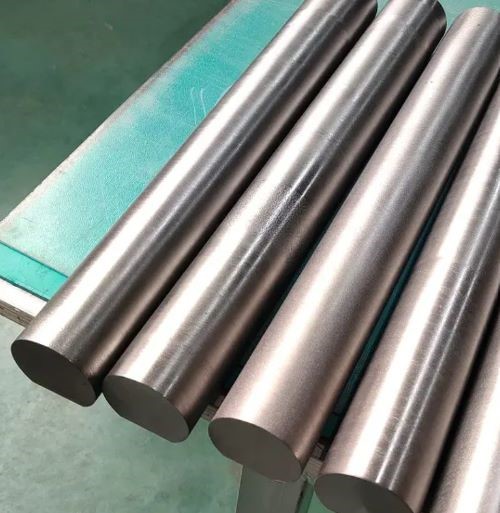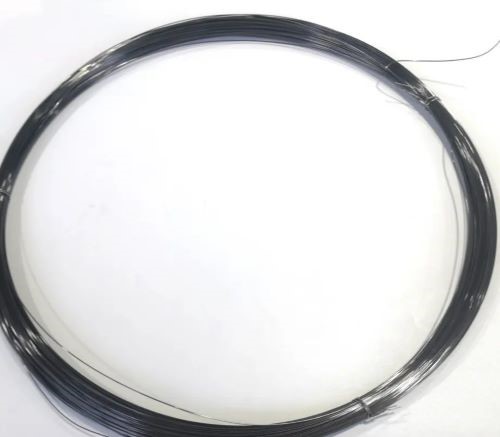
Molybdenum is a highly versatile metal that is widely used in various industries due to its excellent properties such as high melting point, good thermal conductivity, and corrosion resistance. There are a variety of molybdenum metals and alloys available in the market, including pure molybdenum and the molybdenum lanthanum alloy. In this article, we will discuss the differences between molybdenum lanthanum alloy and pure molybdenum. Hope that you can have a better understanding of their features and uses after reading this passage.

Figure 1. Molybdenum Lanthanum Alloy
Pure molybdenum, or Moly, has a variety of desirable features, making it a great choice for lots of applications. It has a high melting point of 2623 °C, which is the third highest melting point following tungsten and tantalum. Molybdenum also stands out for its good thermal conductivity and low coefficient of thermal expansion. This pure metal is highly resistant to corrosion and wears as well. With these promising characteristics, molybdenum is employed to make hot zones for high-temperature devices, glass-melting electrodes, etc.
Related Reading: How Is Molybdenum Metal Used In Vacuum Furnace Hot Zone?
However, pure molybdenum has certain limitations. For example, it has a tendency to crack and deform under high-stress conditions due to its low ductility. It is also susceptible to oxidation at high temperatures. One solution to its low ductility and susceptibility to cracking is to alloy it with other elements to improve its properties. For example, adding small amounts of lanthanum oxide can significantly improve the strength and ductility of molybdenum. Another solution to its susceptibility to oxidation at high temperatures is to apply a protective coating, such as a layer of silicon carbide. The coatings can provide a barrier that prevents oxidation and extends the lifespan of the material.
Molybdenum alloys come in many different types, each with its own unique properties and characteristics. One commonly used alloy is molybdenum lanthanum, which contains a small amount of lanthanum oxide in molybdenum. As we mentioned before, the addition of lanthanum oxide enhances the mechanical properties of pure molybdenum, such as high ductility, toughness, and strength, which makes it more resistant to cracking and deformation under high-stress conditions.
The lanthanum oxide contents also improve the high-temperature performance of molybdenum by reducing its tendency to oxidize. The lanthanum added gives the molybdenum a special stacked fiber structure, which is stable at up to 2000 °C depending on the manufacturing route. Mola is also creep-resistant even under extreme conditions.
Molybdenum lanthanum alloy is perfect for high-temperature applications. You can find sintering and annealing boats and other furnace components made from Mola. Such alloy is used in the lighting industry for retaining as well.
Related reading: Molybdenum Alloys 101
In a word, Molybdenum lanthanum alloy is superior to pure molybdenum. In terms of mechanical properties, molybdenum lanthanum alloy could stand high-stress applications with its higher ductility and strength. This alloy could also bear higher temperatures, which leads to better thermal performance.
Nevertheless, molybdenum lanthanum alloy is more expensive than pure molybdenum due to the addition of lanthanum oxide. It is also more challenging to process than pure molybdenum due to its higher ductility.
Let’s learn more about the advantages of Mola over Moly by comparing pure molybdenum wire and molybdenum lanthanum alloy wire.

Figure 2. Molybdenum Lanthanum Wire
Recently, pure molybdenum wire and molybdenum lanthanum alloy wire are used in EDM wire cutting extensively. The main requirements of wire cutting for those metal and alloy materials are the broken rate, discharge efficiency, and material loss. The quality and performance of these two kinds of wires can be also measured by ductility, tensile strength, damage resistance, and electronic escape work.
Some researchers employed pure molybdenum electrode wire and molybdenum lanthanum electrode wire products and tested their performance respectively under the same EDM wire cutting conditions. The following features were measured.
Molybdenum lanthanum alloy and pure molybdenum have different properties that make them suitable for various applications. Pure molybdenum is an excellent material for thermal uses due to its high melting point and resistance to corrosion, while molybdenum lanthanum alloy has superior mechanical properties and high-temperature performance.
Advanced Refractory Metals (ARM) is a reliable supplier of molybdenum and its alloys. There is a range of molybdenum alloys on our website, including the tough titanium-zirconium-molybdenum (TZM) alloy and the ductile molybdenum-rhenium (Mo-Re) alloy. For more information, please check our homepage.
Copyright © 1994-2024 Advanced Refractory Metals owned by Oceania International LLC, All Rights Reserved.